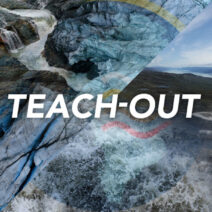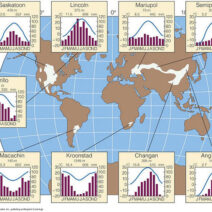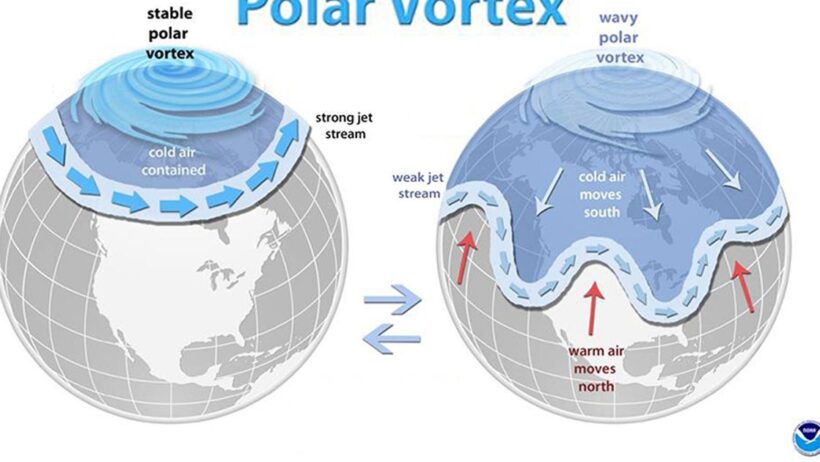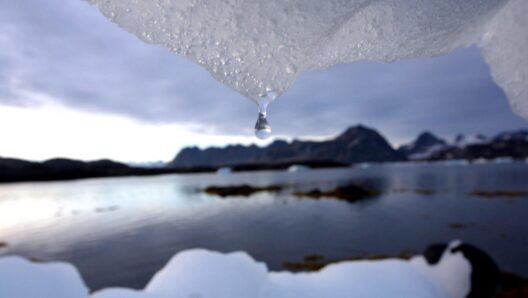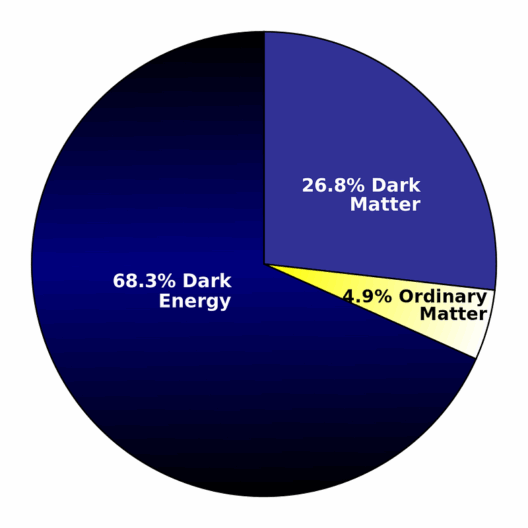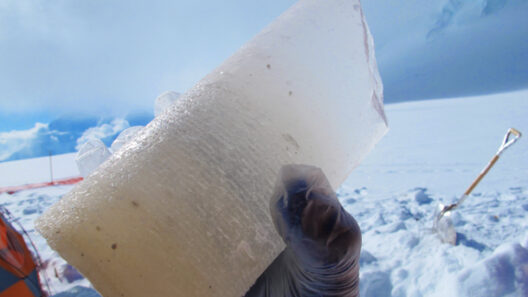In recent years, anomalous weather patterns, including the polar vortex, have captivated public attention and prompted discussions surrounding global climate change. While one might find it paradoxical that extreme cold events can coexist with the overarching trend of global warming, understanding the interplay between the polar vortex phenomena and climate change reveals the intricate dynamics of the Earth’s atmosphere.
The polar vortex refers to a large area of low pressure and cold air surrounding the Earth’s poles. This meteorological phenomenon is typically stable during the winter months, containing chilly air in a concentrated area. However, when the polar vortex weakens or becomes disrupted, the colder air can spill southward, leading to intense winter weather events in regions not usually accustomed to such frigid conditions. This disruption has become emblematic of what many label as an increasingly volatile climate system.
At its core, the polar vortex serves as a visible manifestation of the complex interplay of atmospheric conditions influenced by climate change. The warming of the Arctic has been linked to the destabilization of the polar vortex. As Arctic temperatures rise at a disproportionately accelerated rate compared to regions further south, the difference in temperature between the Arctic and the mid-latitudes diminishes. This can lead to fluctuations in the polar vortex’s strength and position, allowing cold air to rush down into areas that might otherwise be temperate.
When equating climate change with global warming, it is essential to acknowledge that climate encompasses more than just average surface temperatures; it includes variations in weather patterns, precipitation, and storm intensity. Thus, the occurrence of extreme cold events does not negate the reality of an overall warming trend. Instead, it underscores the complexity of climate systems and the need for a nuanced understanding of these phenomena.
The phenomenon of the polar vortex also raises intriguing questions regarding the behavior of the jet stream, a fast-flowing air current in the upper atmosphere. A weakening jet stream, influenced by climate change, can exert profound effects on weather systems. As the jet stream becomes wavier, it can lead to prolonged periods of extreme weather—both cold and hot—by allowing air masses to remain stagnant over certain regions. This stagnation creates conditions ripe for extreme weather patterns, including frigid Arctic air infiltrating southern territories traditionally characterized by milder winters.
Moreover, the occurrence of extreme weather events, including polar vortex incidents, highlights an essential aspect of climate change—its uneven and unpredictable nature. With measures taken to mitigate greenhouse gas emissions and combat climate change, one might expect a gradual tempering of extreme weather. However, climate change manifests as both a warming climate and an increase in the frequency and intensity of extreme weather events. Consequently, regions may experience paradoxical weather extremes, confounding expectations based on simplistic models of climate warming.
Returning to the polar vortex, the complexities intensify when considering the role of ocean temperatures and their contribution to atmospheric conditions. For instance, phenomena such as El Niño and La Niña significantly influence global weather patterns and can interact with the polar vortex in unexpected ways. These oscillations in ocean temperatures affect atmospheric circulation and can modulate the polar vortex’s behavior, leading to a capricious climate that challenges even the most seasoned meteorologists.
The observed rise in frequency and intensity of extreme cold events amid a warming planet encourages scrutiny of societal reactions and interpretations regarding climate change. Many people still cling to the misconception that colder weather must negate climate change. This misunderstanding can lead to complacency regarding the broader implications of increasing greenhouse gas concentrations and the resultant shifts in climate patterns. The conflation of one-off extreme cold events with a static state of climate can mask the urgency of addressing climate change proactively and comprehensively.
It is also essential to consider the historical context surrounding weather changes and climate systems. Weather is inherently variable, and while the acceleration of warming trends orchestrated by human activity is alarming, fluctuations, such as those presented by the polar vortex, have existed throughout climatic history. However, the current rate of change—exacerbated by anthropogenic emissions—creates an environment where formerly stable patterns become volatile. This creates a feedback loop where extreme weather can adversely affect public perception and response to climate policies.
As communities confront the realities of extreme weather, including disruptions associated with the polar vortex, embracing adaptive strategies becomes paramount. Urban planning, infrastructure resilience, and heightened awareness around renewable energy are all critical components of preparing for an uncertain climate future. Furthermore, public engagement and education regarding the connections between climate change and extreme weather can facilitate a collaborative approach to mitigation and adaptation.
Ultimately, the tensions between the polar vortex and global warming encapsulate a broader narrative surrounding climate change. As scientific understanding evolves, it becomes clearer that climate change is not merely about rising temperatures, but rather a complex interplay of factors, including human impact, natural variability, and unpredictable atmospheric behavior. The polar vortex exemplifies how, in a warming world, old certainties dissolve, paving the way for newly emerging patterns that challenge our notions of climate stability.
Understanding these intricacies is crucial not only for grasping the present and predicting future weather patterns but also for informing our responses to one of the most pressing issues of our time. It propels a commitment to filling the gaps in our knowledge, inspiring actionable change at the individual, community, and global levels.
